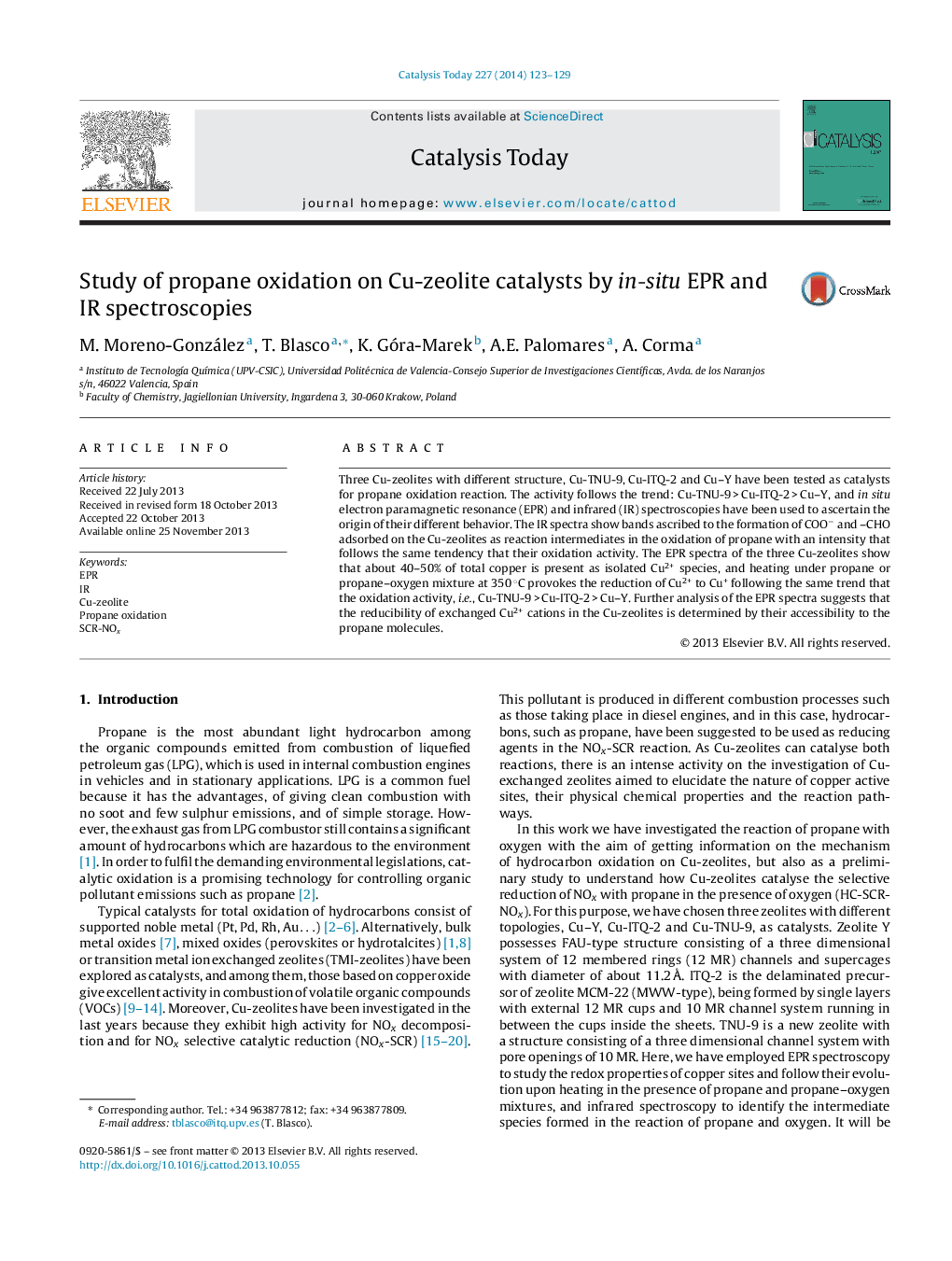| کد مقاله | کد نشریه | سال انتشار | مقاله انگلیسی | نسخه تمام متن |
|---|---|---|---|---|
| 54167 | 46999 | 2014 | 7 صفحه PDF | دانلود رایگان |

• In situ EPR and IR have been applied to study the C3H8 oxidation over Cu-zeolites.
• EPR studies show different redox behavior for Cu exchanged TNU9, ITQ2 and Y zeolites.
• IR experiments show the formation of different intermediates and final products.
• Higher reducibility of Cu(II) sites in the zeolites is related with a higher activity.
Three Cu-zeolites with different structure, Cu-TNU-9, Cu-ITQ-2 and Cu–Y have been tested as catalysts for propane oxidation reaction. The activity follows the trend: Cu-TNU-9 > Cu-ITQ-2 > Cu–Y, and in situ electron paramagnetic resonance (EPR) and infrared (IR) spectroscopies have been used to ascertain the origin of their different behavior. The IR spectra show bands ascribed to the formation of COO− and –CHO adsorbed on the Cu-zeolites as reaction intermediates in the oxidation of propane with an intensity that follows the same tendency that their oxidation activity. The EPR spectra of the three Cu-zeolites show that about 40–50% of total copper is present as isolated Cu2+ species, and heating under propane or propane–oxygen mixture at 350 °C provokes the reduction of Cu2+ to Cu+ following the same trend that the oxidation activity, i.e., Cu-TNU-9 > Cu-ITQ-2 > Cu–Y. Further analysis of the EPR spectra suggests that the reducibility of exchanged Cu2+ cations in the Cu-zeolites is determined by their accessibility to the propane molecules.
Figure optionsDownload high-quality image (141 K)Download as PowerPoint slide
Journal: Catalysis Today - Volume 227, 15 May 2014, Pages 123–129